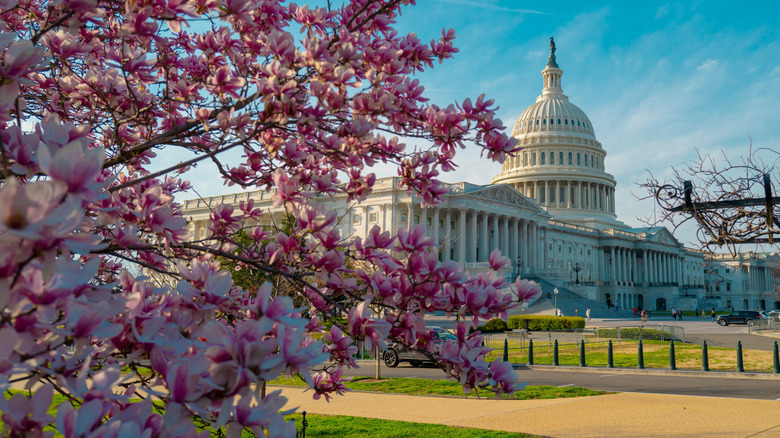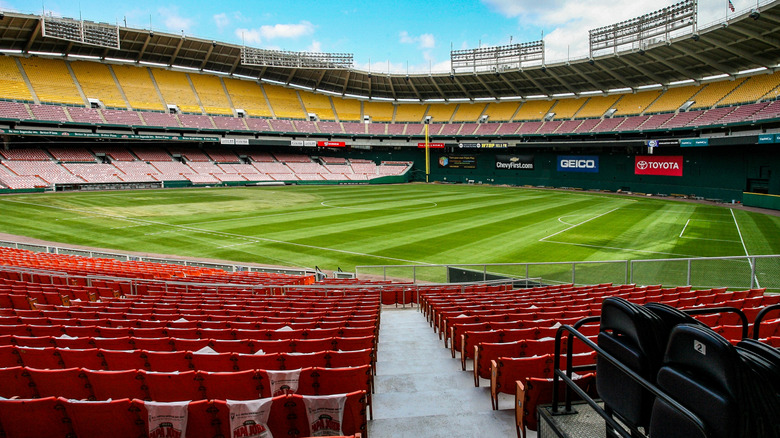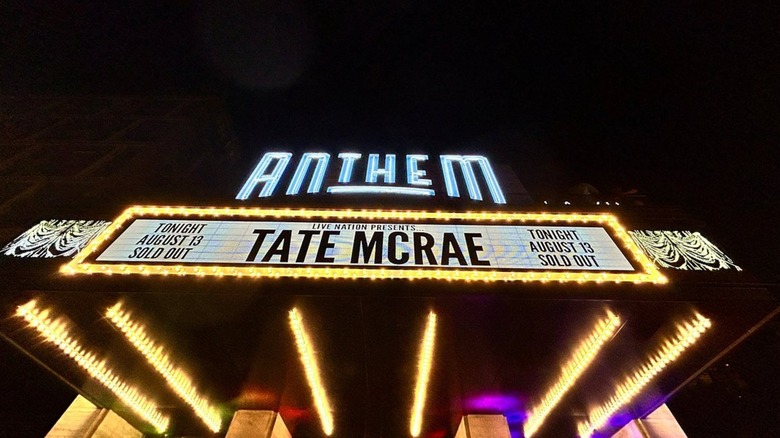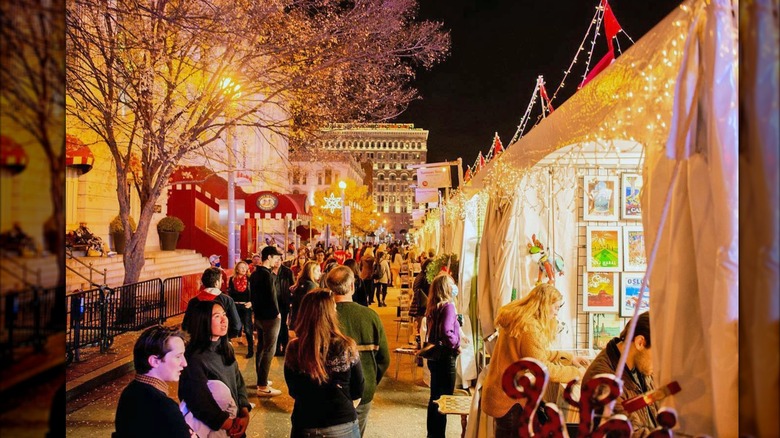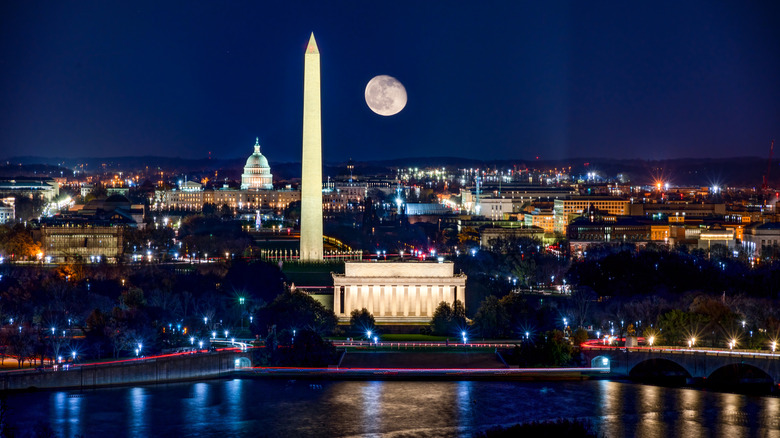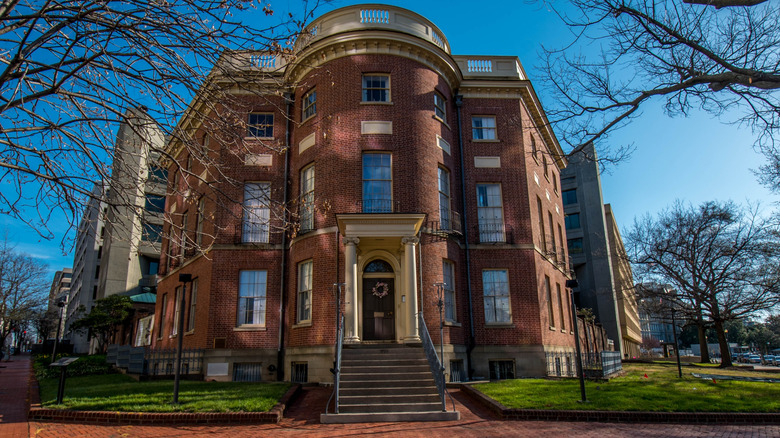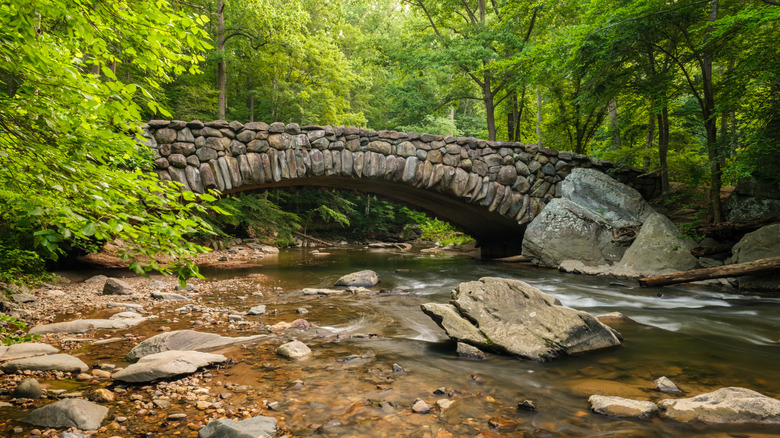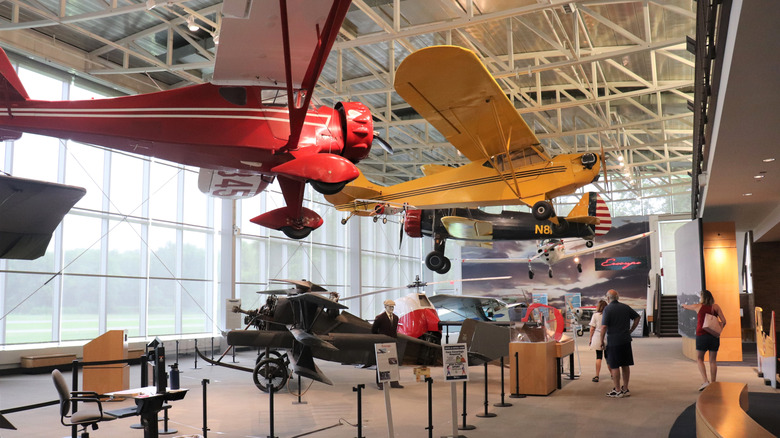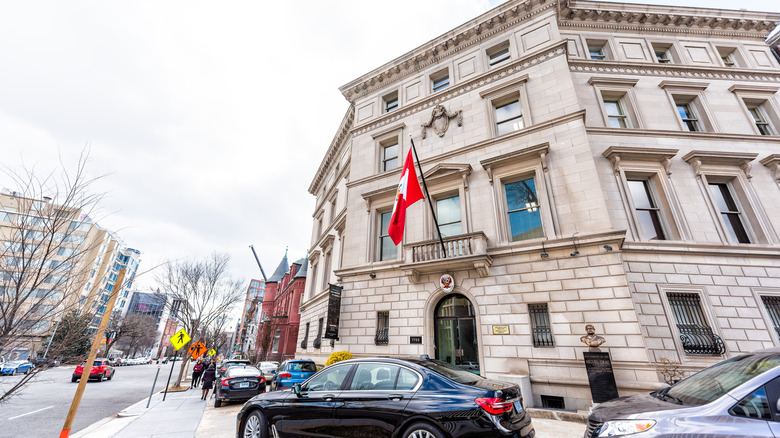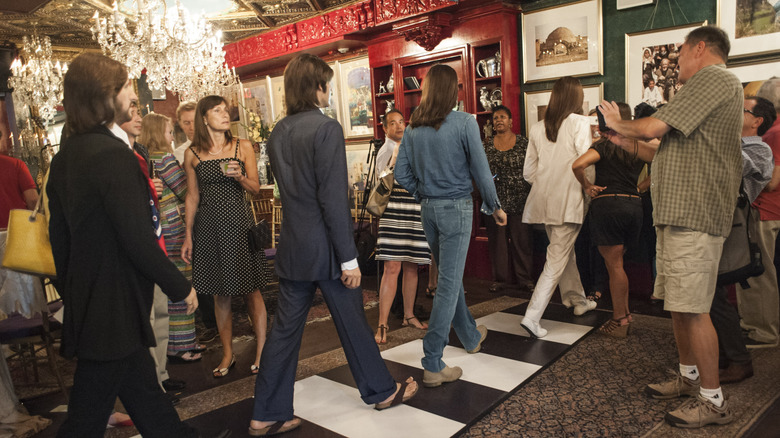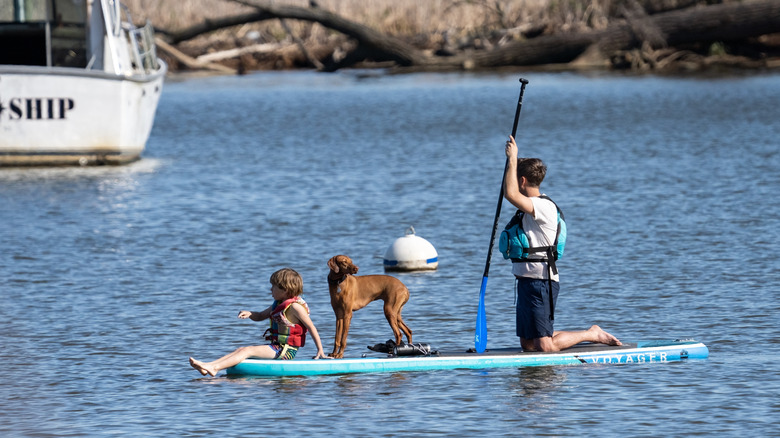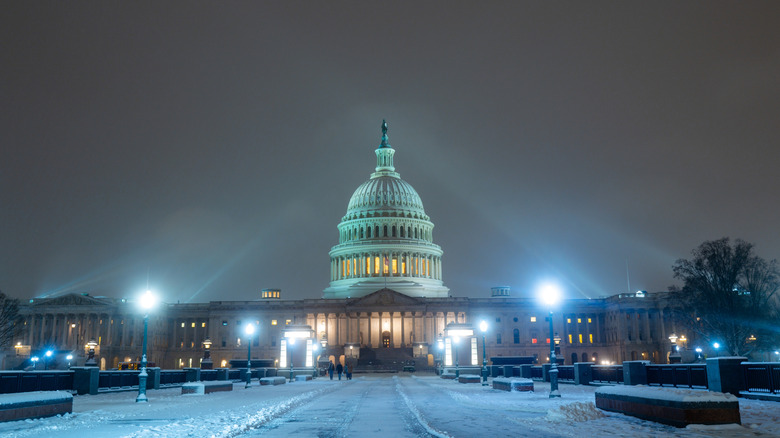Non-Touristy Activities You Shouldn't Skip On Your Washington D.C. Trip
The marvels of Washington, D.C., are on full display. The city occupies a square carved out of the marine landscape of the Potomac's northern banks, where Maryland and Virginia meet. Washington and its surrounds play host to a truly packed house of historical landmarks, new sites, and tremendous natural splendor. It's unsurprising that almost 26 million people visited Washington, D.C., in 2023. The city's contemporary urban landscape is home to the federal government and all the iconic buildings that go along with those requirements — from the White House and Eisenhower Building to the Library of Congress.
Tourists from across the world flock to D.C. to explore the city's best memorials and monuments, and more than a few famous museums make it on visitors' lists, too. But these sites are geared toward tourists! Those who frequent the District of Columbia often stop at a few of their favorite monuments and then move on to see other elements of the community's vibrant tapestry.
More than 700,000 people live in Washington, D.C., and all manner of local flavors come together to make this place welcoming and exciting. These great options for a trip to the nation's capital come from those who have lived in Washington or frequently spend time stomping its streets. They veer away from the museum culture and lean into lesser-known options that can make your trip shine. However, a few undeniably magnetic entries that run off the beaten path are still featured here.
Catch a game
Washington, D.C., is home to five major sports teams and a host of others. These are Washington Nationals, Washington Capitals, Washington Wizards, Washington Commanders, and D.C. United. Visitors coming to the city can see professional sporting competitions at all times of the year. With baseball, basketball, and hockey games, plenty of mid-week contests can be found on the schedule. These offer activities that can fit neatly into your travel itinerary without much, if any, additional planning needs. The Commanders primarily play on Sundays, so if you're hoping to catch an NFL matchup, you'll want to keep that in mind.
Locals are big sports fans, and D.C. is the eighth largest sports market in the U.S. as a result. Similarly, fans of other organizations may get the opportunity to catch their hometown teams in D.C. The Nationals play in the NL East, an exciting division that pits the Nats most frequently against the likes of Atlanta, New York (Mets), and Philadelphia — all great teams with a large fanbase. The Capitals share the Metropolitan Division with the New Jersey Devils, Philly, Pittsburgh, and the New York teams. The same wide regionality can be found throughout the D.C. sporting world. With so much to choose from, inexpensive tickets make seeing games an easy activity to add to your travel itinerary.
See a live show
Live sports aren't the only entertainment draw for the D.C. marketplace. The city is home to numerous live entertainment venues that draw massive performing acts throughout the year. Capital One Arena and Nationals Park are a natural starting point. But these large venues that repurpose themselves for shows are far from the only option when seeking bands, singers, or comedians.
The Anthem, the 9:30 Club, and The Atlantis are all equally potent stages to catch some of your favorite artists. There are also indie and alternative options like Black Cat, a live-music venue, or Blues Alley, a jazz joint. For a more sophisticated performance, you might consider seeing the National Symphony Orchestra at The Kennedy Center. Then, there's the indie scene with staples like the Fort Reno Concert Series. The icon of free D.C. music has been put on consistently since 1968 and showcases independent and up-and-coming artists from the area.
D.C. is home to an eclectic mix of locals and new arrivals. People from all walks of life and a range of personal backgrounds come together in this historic town to share something special. The music scene reflects that collision of personality and identity. There's something for everyone here, and being squished within a large metropolitan expanse along the Atlantic coastline ensures that plenty of fans from other nearby areas can travel to see their favorite acts. This makes it a great atmosphere for explorers coming from even farther away.
If you're in town during the winter, head to the D.C. Holiday Market
Travelers who frequent the European continent will be familiar with some of the widespread community's holiday traditions. From Budapest and Zagreb to Lille and Brussels, European cities typically host incredible Christmas markets in the wintertime. You don't have to cross the Atlantic to see a splendid display of winter lights and cheer, though. Washington, D.C., has a holiday market that's worth visiting.
The market pops up just north of Dupont Circle Park at the end of November and continues until a few days before Christmas. The spectacle can be experienced any day of the week and features a smattering of food, art, and other stalls set up by local businesses. Musical acts also feature in the experience, and the mood is festive and cozy. Visitors coming to D.C. around this time of year will frequently want to pack a bit heavier since the frigid winter can see the mercury dip, especially at night. But warming yourself up in good company and with great food and drink can add a bit of additional sparkle to the adventure.
See the monuments at night to avoid the crowds and experience them in a different light
The monuments are some of the most spectacular sights you'll catch in Washington. Scattered throughout the National Mall, these silent arbiters of the collective American experience tell many stories of the past. Whether it's the Korean War Memorial or the Washington Monument you're most eager to see, lace your shoes and head to D.C.'s central lawmaking district to explore the city's treasures. All around the Tidal Basin and beyond, delicate works of art are seamlessly knitted into the environment to lionize important historical events and people (e.g., the sprawling Roosevelt and WWII Memorials).
However, the monuments and memorials are perhaps the definition of tourist attractions in Washington, D.C. It might seem odd to include them here for that reason, but there's an incredible alternative that will give you a brand new perspective on the city's historical fare. Instead of walking through D.C. to explore its marble statues and obelisks during the day, wait until the sun goes down and the lights come on. You can even take a tour of these spectacular gems after dark if you wish. Crowds die out toward the evening, and the lighted experience that these monuments provide is a totally different atmosphere. You'll be gifted a grand tour of the D.C. memorial circuit with a brand new view and a severe reduction in crowds — potentially even none at all in many places.
Explore D.C.'s historic homes
Washington, D.C., is a place of immense consequence. Many historical events in America happened within the small confines of D.C. and a string of surrounding hamlets tucked away in Virginia and Maryland. More than 40 historic homes are preserved in the area by the Historic House Museum Consortium of Metropolitan Washington, D.C. These operate like museums but are a bit different. Rather than drawing large crowds like Arlington National Cemetery or the Capitol Building's sweeping rotunda, many of these locations fly firmly under the radar.
Some important homes include the Belmont-Paul Women's Equality National Monument, the historic home of the National Woman's Party, originally constructed in 1799. The Octagon –- home to the Madisons after the British destroyed the White House in the War of 1812 — is another building featured here, as is the Woodrow Wilson House, D.C.'s singular presidential museum. A great many of these structures have played important roles in the formation of the modern state of American culture and life. Yet, as far as museums go, they're often underappreciated or even remain unknown to many tourists coming to explore the city. Taking a tour or strolling through one of D.C.'s historic homes (such as the Florida House on Capitol Hill, the only state embassy in D.C.) is a great way to see something new that's off the beaten path.
Head to Rock Creek Park for a different kind of outdoor adventure
Another alternative approach to a visit to Washington, D.C., involves a trip to its northern expanse to see one of the United States' coolest public parks. Most visitors will stay well within the central areas of Washington, perhaps venturing toward Georgetown or across the Potomac to see portions of Arlington. Regardless of the individual, the allure of the National Mall, the National Archives, and other tourist highlights keep visitors largely in place. Instead, pulling away and exploring something a bit farther out of the ordinary can be immensely rewarding.
Enter Rock Creek Park, an almost 3,000-acre national park incorporated in 1890, making it the third site established under this classification (and the oldest urban park in the NPS). More than half the park is covered in a natural forested landscape. It also encompasses 99 sites in total, including Montrose, Meridian Hill, and Dumbarton Oaks Parks (featuring one of the largest mansions in America), as well as Old Stone House and Georgetown Waterfront Park.
Meridian Hill Park is one of the most popular destinations among locals here, and it's played host to a drum circle that's been congregating on the park grounds every Sunday for 40 years. It also features a set of steps that took direct inspiration from Rome's famous Spanish Steps (while you can't sit on Rome's steps any longer, stopping for a rest in Meridian Hill Park on the landmark is perfectly alright). The forest areas of Rock Creek Park are also a quality choice. More than 32 miles of hiking trails run through the north D.C. greenway, making for a peaceful oasis amid the churn of urban activity.
Check out the College Park Aviation Museum in nearby Maryland
Another museum in the D.C. metropolitan area that gets far less attention than it deserves is the College Park Aviation Museum. Less than 10 miles northeast of D.C. in Maryland, the museum sits at the home of the oldest continuously operating airport in the world. The facility was established (as College Park Airport) in 1909 by the Wright Brothers shortly after successfully achieving human flight. Here, Wilbur would train two army officers to fly as part of the government's purchase order for the brothers' flying machines. The partnership was launched in 1907, but it would take two years to find its wings, so to speak.
The field that served as a rudimentary airport would become known as the "Field of Firsts" since so many of early human flight's first occurrences took place here. In College Park, the first American woman to fly as a passenger took off in October 1909, while a few years later, Congress approved the purchase of five more planes, making this burgeoning airfield the army's first true flying school. Instead of seeing a single room at the National Air and Space Museum dedicated to the Wright Brothers' aircraft and all that it has spawned, true aviation diehards will likely want to head right to the source. A powered flight may have been born at Kitty Hawk, but it grew up and left the nest just north of D.C.
Head to an embassy party or event
It might come as a surprise to many visitors, but embassies aren't exclusively the closed-off sanctums of bureaucratic work that they might seem. The reality is that embassies also play an important role in the public affairs arena, attempting to win the hearts and minds of the people who live in the host nation. Embassy staff from countries across the globe consistently host all manner of events within their ballrooms, performance halls, and dining areas.
Indeed, embassy parties are the talk of the town, and people who live in Washington, D.C., or frequent its urban oasis will be familiar with the embassy event schedule. In April, there are events at the Chinese, Saudi Arabian, and Slovenian embassies, to name just a few. These will feature cultural iconography from each of their respective nations, with an opportunity to learn about a place flung far out there in the world beyond the speck that is Washington, D.C. If you're in town during an embassy event, looking for tickets to attend the party, performance, or gathering is a great way to experience Washington as the locals do.
Explore the secret doors and quirky rooms of the O Street Museum
The O Street Museum is the final indoor entry on this list, and it might appear to conform to a more typical visit to D.C. The facility is, after all, a museum. However, it's probably unlike any other you may have seen before. As an independent repository for artwork and eclectic objects, it's not a prominent feature on many visitors' to-do lists, getting a different treatment than a smattering of Smithsonian museums or the city's many art galleries might receive.
This museum instead features more than 100 rooms and nearly as many secret doors connecting the whole tangle of oddities. It has been named the coolest place in D.C. and a top-five historic venue. It's a one-of-a-kind experience in which visitors navigate their way through a wide range of exhibits that bring together facets of the American experience from all corners of the country. Here, you'll find memorabilia from the sports, music, and film worlds — such as Bob Dylan's Rock & Roll Hall of Fame guitar.
The building itself isn't without a bit of spectacle, too. It was designed by Edward Clark, the U.S. Capitol Building architect, in 1892 and incorporated the outward structure of three adjoining townhouses (it has since expanded to five in total). Clark and two of his brothers (one being James Clark, who would serve as Speaker of the House) lived in this fascinating residence. In the 1930s, it served as a home to J. Edgar Hoover's early FBI agents.
Paddle on the Potomac River to see D.C. from an aquatic vantage point
Visitors seeking a rewarding jaunt through the town might consider an alternative to its streets altogether. Instead of walking around Washington D.C. by land, consider hopping into a kayak, canoe, or paddle boat to explore the nation's capital by water instead. Visitors won't need to bring gear with them, either. You can rent watercraft around the capital district, giving you everything you need to get out on the Potomac in style.
Paddling around the area will bring you into contact with all kinds of unique aquatic finds. Mallows Bay in Charles County, Maryland, for instance, features the largest collection of abandoned naval ships in any waterway found in the Western Hemisphere. The ship graveyard has sat idle since the 1920s when a massive collection of World War I-era warships was moved here to be scrapped and burnt. Roughly 200 ship carcasses form the "Ghost Fleet of the Potomac." In 2019, the area was designated a national marine sanctuary. Then, there's the Tidal Basin, with the likes of the Jefferson Memorial, Martin Luther King, Jr. Memorial, and more dotting its surrounding landscape.
Methodology
Recommendations came largely from sources who live in Washington, D.C., or frequent the city. Repeat visitors often look to build unique itineraries for each trip, so these kinds of explorers are quite valuable when it comes to finding suggestions, too.
Some activities naturally still include visiting the National Mall and the capital's museums — since there are so many of them. However, this list sought to highlight more obscure destinations and approaches to any inclusion that might otherwise be somewhat common on travel to-do lists for tourists coming to Washington.
